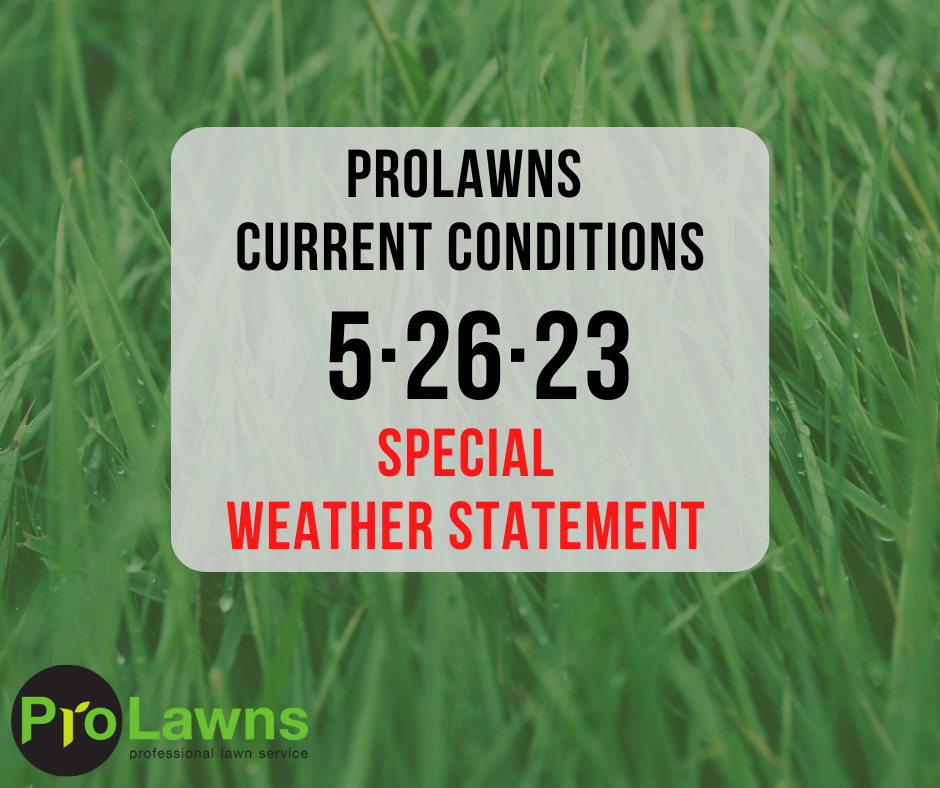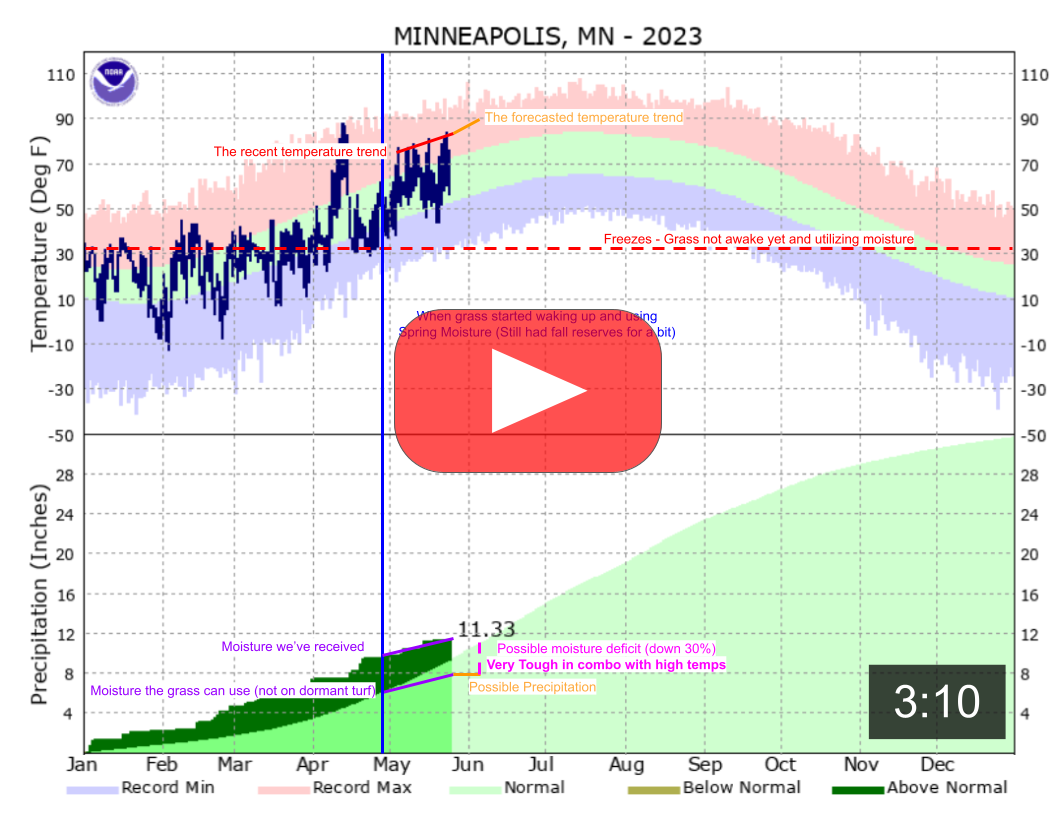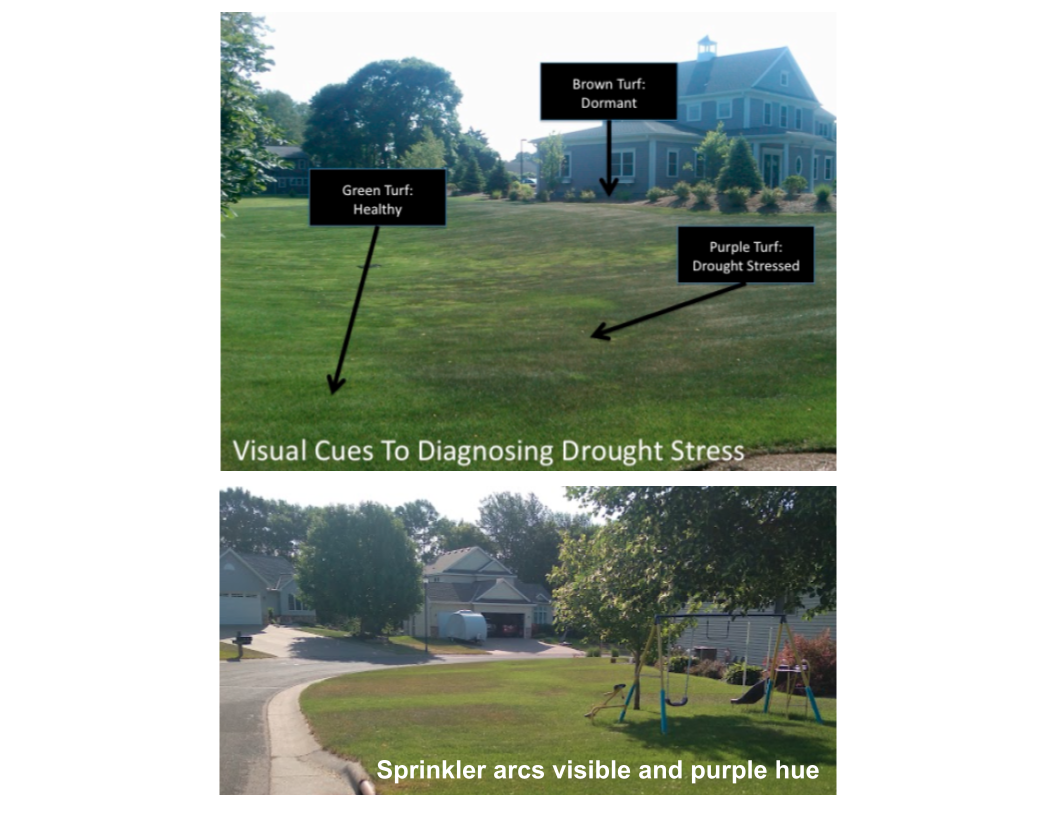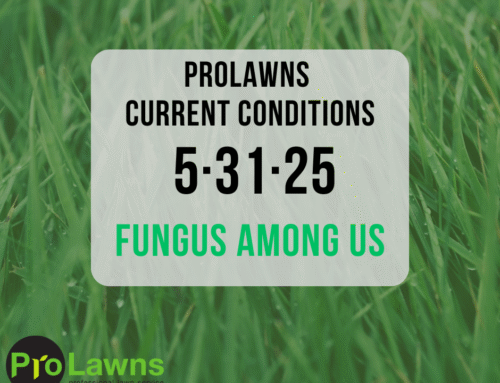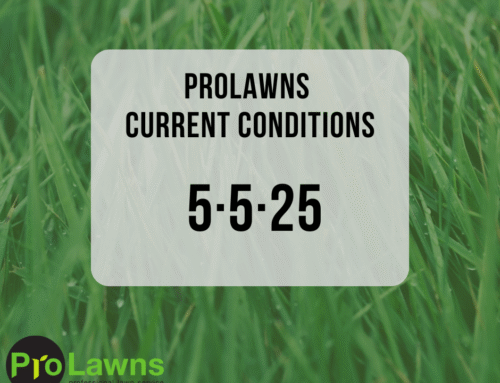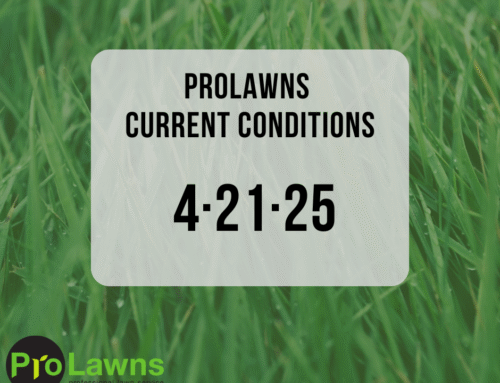What We’re Noticing:
- It’s dry! And about to get HOT. Lawns are dry 😮. See below.
What we’re doing:
- Wrapping up our first rounds of lawn care and our landscape bed grass and weed control.
- We’ll be starting Mosquito/Pest Control “ProSquito” next week and getting into our 2nd round of lawn care
What you can be doing:
- Set your mower height up! (We know! – It’s too early in the season for this… Two week early than last year… Mother Nature says now though 😢)
- Get your sprinkler system functional or your hose ready and get ready to water.
- Earn $10 (X2) credit with us and learn how to appropriately mow and water our MN turf here: https://prolawnsmn.com/deals/
- See below for more info about the special weather statement
DO NOT MOW YOUR LAWN SHORT THIS WEEKEND IF AT ALL
*Much of this is copy and pasted from our first heat wave post last year.*
Not mowing short is the main point to take away. If you take nothing else away from this, that’s a small victory. Continue reading to help your lawn manage the upcoming above average temperature run.
Last year was the driest growing season since 1910 with the driest September ever recorded. Two summers back (2021) was the hottest year on record and the first half being the driest since they started measuring in 1887. This has taught us a lot about the importance of cultural practices in the health of the lawn. The best fertilizer in the world can’t help when mowing and watering doesn’t match weather conditions.
The lawns that fared the worst the last couple years were the ones that were mowed short right before the heat and drought. We manage around 1000 properties and learned exactly what worked and what didn’t, short mowing being the main thing that didn’t work. We’re about to go into an early hot spell, similar to how the last two years started so let’s head off any issues this year:
NOT ONLY IS IT ABOUT TO GET HOT BUT IT’S BEEN DRY!
Click either image below or here to learn more about the current weather
Your Lawn’s Survival Guide
All the tips below are covered here and you’ll earn a $20 credit with us: https://prolawnsmn.com/deals/
Mowing
- Mow as high as possible. This is the key take-away. Taller grass = deeper roots = better heat and drought tolerance. Set the height of cut as absolutely high as the mower can go… Not the middle height setting. Not the setting that the mower came with when you bought it. Not where the mower “cuts best”. Not where you can keep it short so it “looks clean”. Not where “you’ve always had it” unless that’s the highest possible setting. Not lower than the highest “because the grass is still growing like crazy”… The highest possible setting – this can even be “transport mode” on some riders as long as that’s not higher than 5″. And if you using a mowing service, make sure to tell them this. They are not turf health experts. They are ‘cutting grass fast to get paid’ experts and will not change their process unless forced.
- Adjust your mowing schedule. Initially this will mean more frequently; Especially if we get some rain, the heat will accelerate growth at first and you will be tempted to keep cutting short. Do not be fooled; continue cutting high even though it is growing like crazy. Mowing more than once per week can be expected to avoid cutting more than 1/3 of the grass blade off. Dramatic cuts are very harmful to the grass especially going into the heat and (hopefully not… but possibly) drought. I know this isn’t convenient but ugly or dead grass is the alternative. If the heat sticks around for a couple weeks and depending on moisture, there likely won’t be a need to mow every week. Do not go out and stress the grass unnecessarily. Keep mowing to avoid cutting more than 1/3 of the blade off. If you’re mowing at 4″, wait until the majority of the lawn is at 6″.
- Do not mow when temperatures are over 90*. Google “lawn mower heat tracking”. Do not let your mowing company do this either, especially since they are going to blame ProLawns when the lines show up… FYI, we cease service at 88* and strategize a loop process on lawns, not back and forth. It’s very easy to identify the cause when evaluating the tire tracks.
- Ensure your mower blade is sharp. Torn grass tips turn brown and do not support the grass blade in any way health-wise. A worn out blade is similar to opening an envelope by tearing it with your finger vs using a letter opener or scissors. Trillions of torn grass blades will give a lawn an overall faded or yellow appearance.
Looking forward
- Watering. As of now, there are no special instructions associated with watering. If you follow the mowing tips above and we end up getting some rainfall, there shouldn’t need to be anything special. If you have irrigation, just ensure it only runs between 4am and 7am. Mid-day watering will waste lots water with the upcoming heat. Watering in the afternoon and evening will foster disease with the forecasted high overnight temps. Fungus grows when grass stays damp overnight in warm temps. Check below for quick visual reference for keeping an eye out for if your lawn needs water.
- Disease. There likely will be disease with the high overnight temp. All lawns get diseases every year which is similar to us getting a cold; a little disgusting but nothing to worry about. The most obvious disease is “Rust” which turns your mower wheels and shoes orange. 99% of disease cases in residential lawns won’t do any damage to the turf. Watering at the appropriate time, mowing appropriately with a sharp blade and trimming low shrubs to promote airflow are the cultural practices to will prevent and minimize disease.
- We’ll keep in touch. If anything changes, we’ll be in touch with more info. Feel free to reach out at anytime with questions.
Watching out for drought stressed turf
WE’RE SEEING THE PURPLE ALREADY!
Don’t let the purple hue fool you
That grass isn’t a “super deep green” due to ProLawns fertilizer. When it is so dark that it is looking purple, that is the stage right before going dormant and brown. That grass needs water. This stage is preceded by a stretch without rainfall and accelerated by high temperatures and/or windy conditions that suck the moisture out of the turf and soil.

